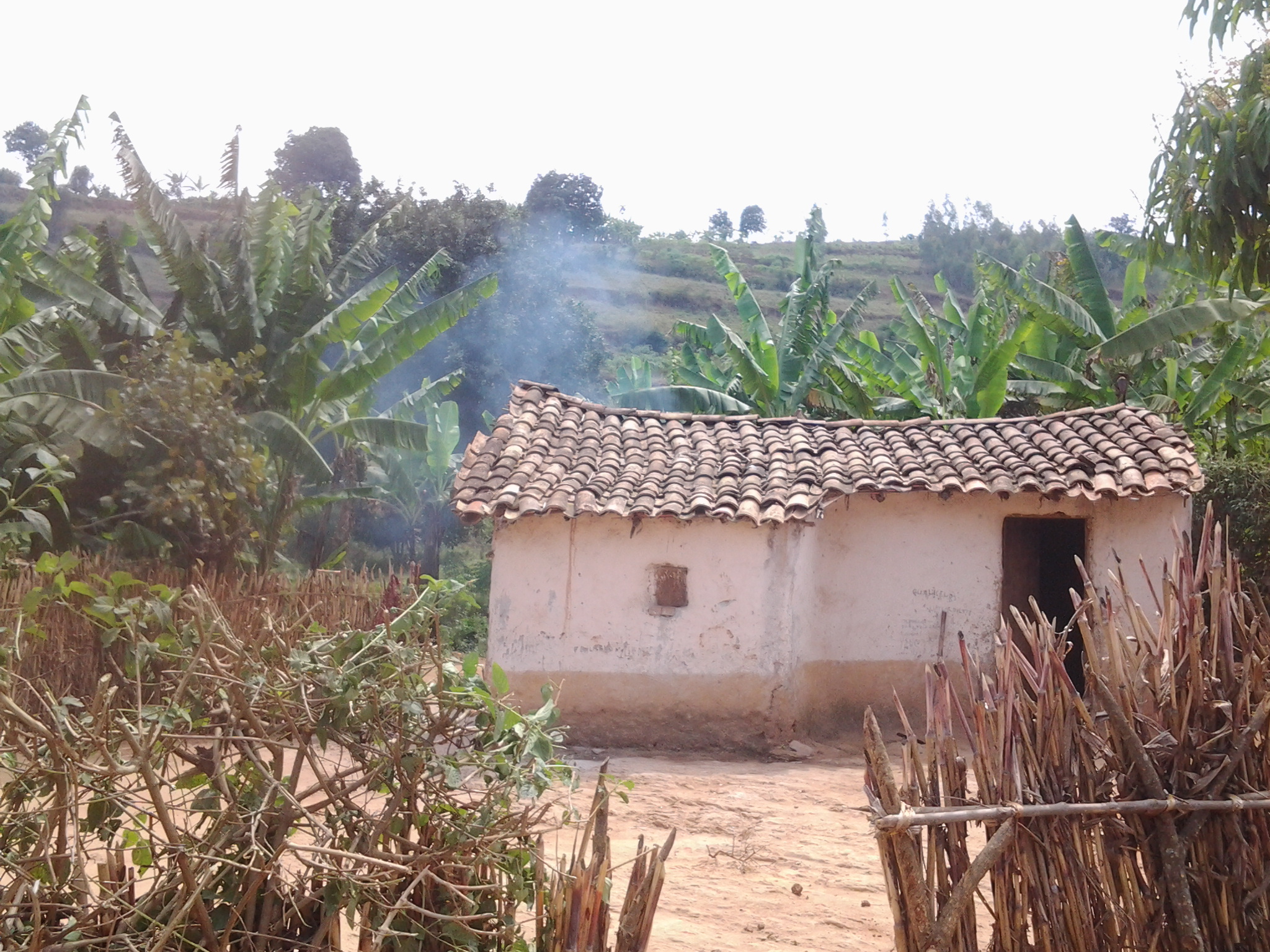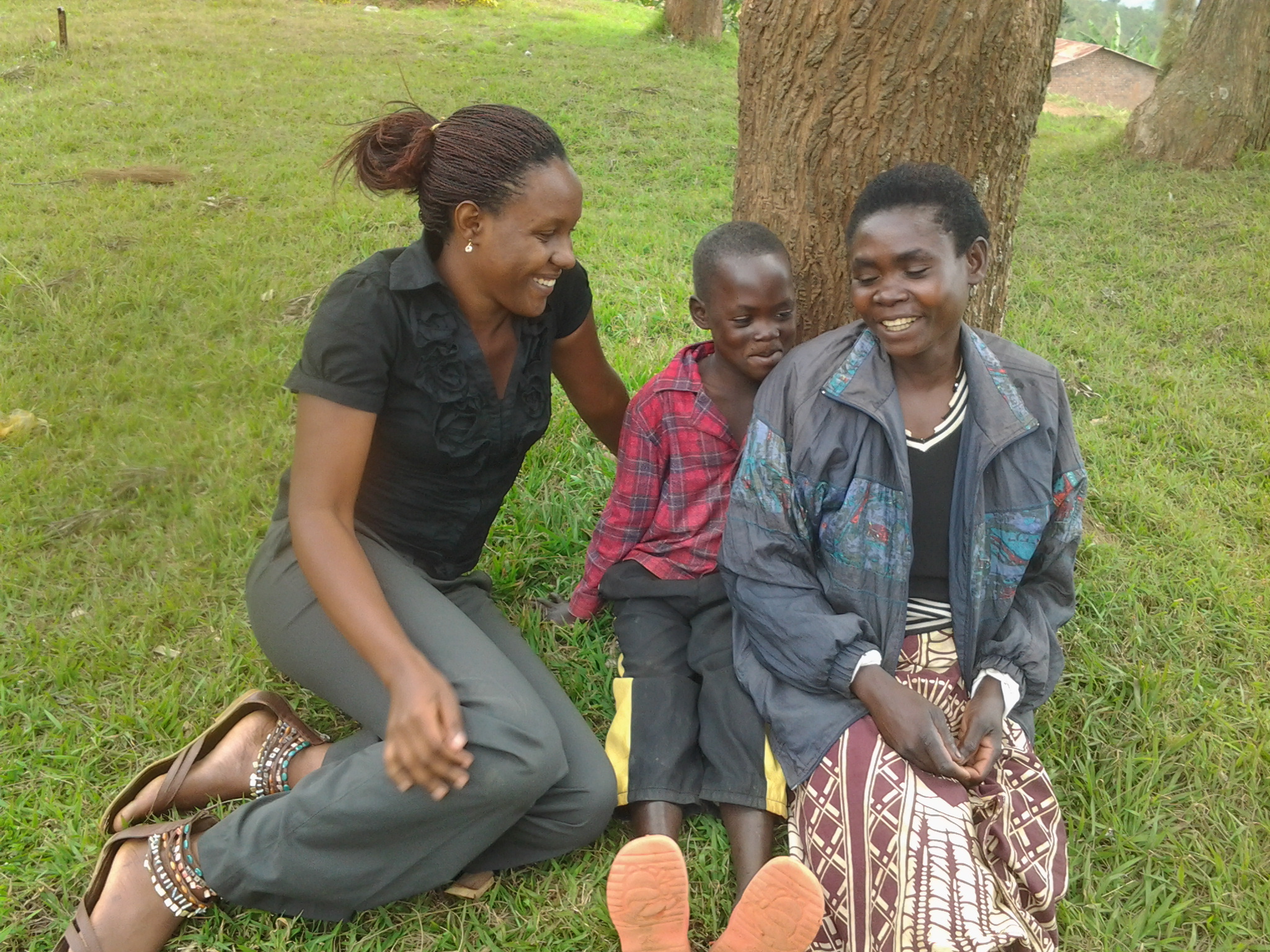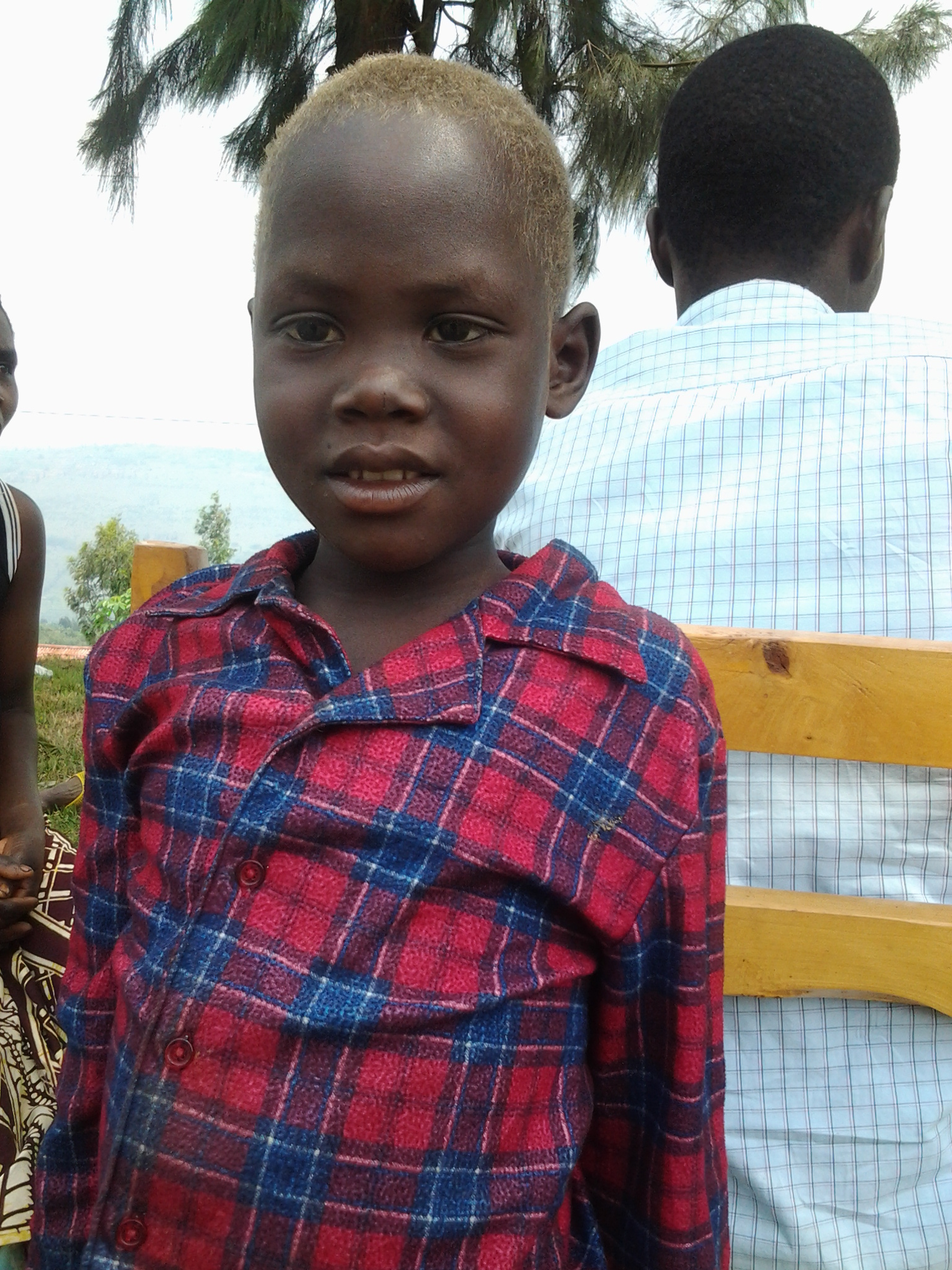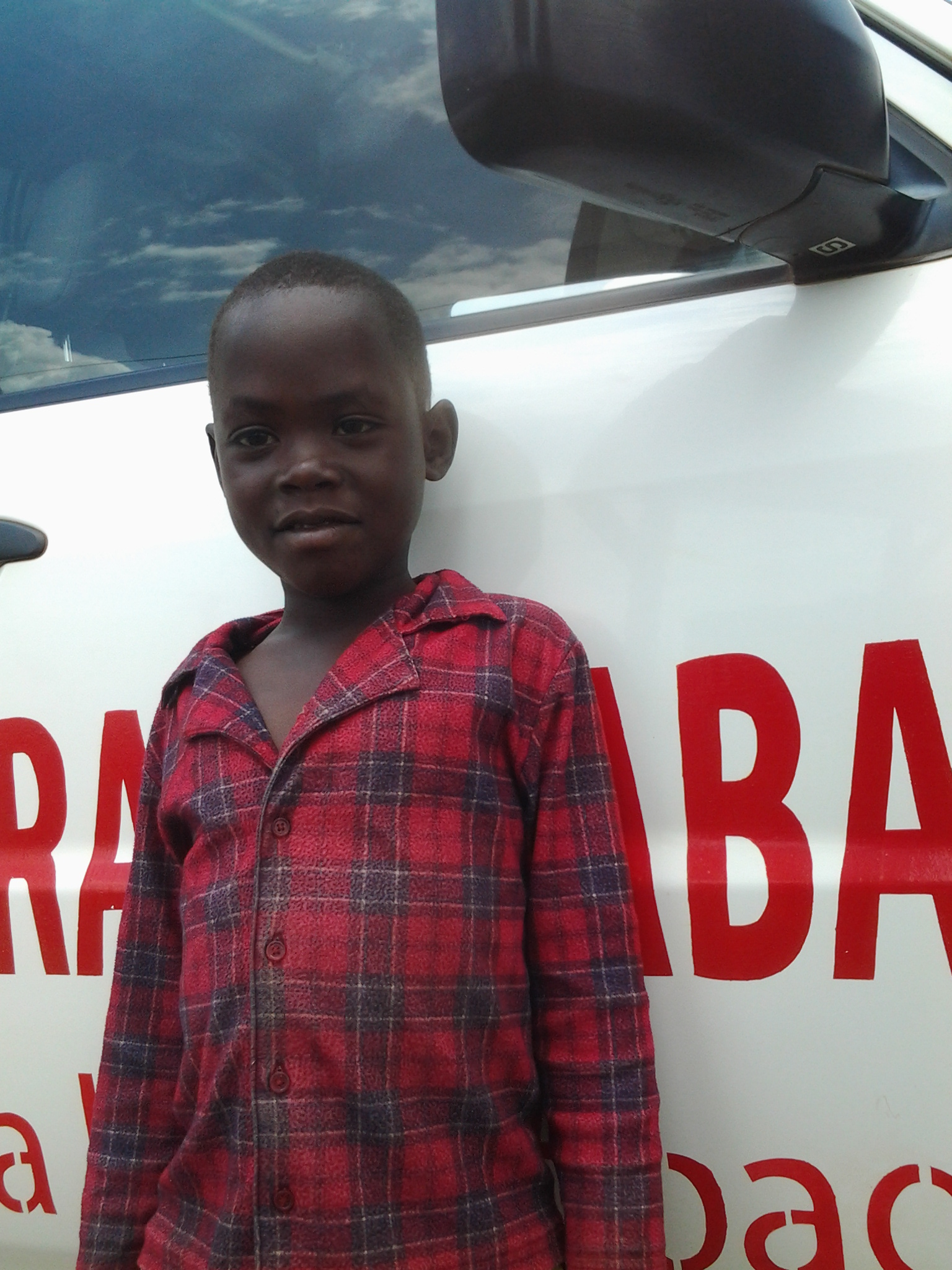The first time that I saw him, my heart skipped a beat. I was in shock. I kept quiet. I searched my colleagues’ eyes, but they had seen worse cases; their eyes had gotten used to it. The first time I met him was during enrollment day on the 15th of January 2014. It was a Wednesday.
I couldn’t look away from his sad face, or his blond hair. I slowly walked to him and waved. He didn’t answer. I asked him if I could take a photograph of him. Cyprien exchanged glances with his mother and he agreed with a glance. I asked him to smile for the camera. He couldn’t. I took some pictures. It was only after showing him the photos that he was able to weakly half-smile.
I have immortalized that moment. The first time I saw him, it was at Kayanga Health Center in the Gasabo District where Gardens for Health was enrolling new mothers whose children were under 5 and suffering from chronic malnutrition into their program.

Cyprien is a 12-year-old young boy. His age automatically excluded him from the program. But after one call to the headquarters, we accepted him into the program. Since meeting him, I was either skeptical about his case or too busy with my other responsibilities. I hadn’t heard any news about his case until Wednesday, July the 16th – exactly 6 months later.
I don’t know why I asked our Field Supervisor, Claire, about him. But, Claire replied, “He is doing fine, you wouldn’t recognize him. He is no longer blond,” she added with a smile. I felt that I had to see him. I organized a home visit with our Field Educator based in Kayanga.“It’s very far,” she warned me. “I’m a field technician,” I responded to her, without being impressed by the steep hills that I was about to take down.
On our way downhill, the only regret I had was that I didn’t slip on my agronomist’s rubber boots. It was a tiny, rocky, and dusty path – a great mixture to make my shoe soles slide.
The more we went descended to Cyprien’s house, the better the path was. On the way, I was amazed by their neighbor’s pig which was suckling its piglets. I was more amazed by how when we wanted to take a picture, the piglets assumed a protective position by closely gathering together as their mother defensively stood, while a swallow was pecking just near them.

We finally reached our destination. Cyprien’s mother welcomed us with open arms. She was happy to have us. I could tell that she had carefully swept the house. She invited us inside. The walls were marvelously decorated by children’s drawings, their untold dreams, giving the same warmth and charm as a Picasso would have in a fancy palace. But, the young boy was not home. He had gone to visit his biological father and his mother went to look for him. She unfortunately came back three hours later without him. So, we agreed to meet another day.


I saw him again exactly 7 months and 5 days after enrollment for the program at Kayanga Health Center. I was very surprised to find an incredibly lively young boy, wearing the same checkered shirt he had on the first time I met him. His red shirt was the only thing I recognized on him. His hair was nicely black, he bore a ringing smile, and the energy of a boy his age.
When people live in cities, they tend to forget the realities of the countryside. So, it was a good surprise, a good feeling. Proof. Proof that change is possible. That action pays. That love wins.
It’s true that his family is still affected by extreme poverty, as are the other millions of Sub-Saharan Africans, that their children are not yet sent to school. But, malnutrition has been defeated in their household. Taking the time to talk with his mother, it’s with a well-known painful voice that she shares her daily difficulties as a rural Rwandan woman, a rural farmer without any other off-farm income, but one who relies on the substantiate production from the farm she cultivates while her husband and son (Cyprien) work in a brickyard in a marshland à côté . She is a woman who raises her family, and she is a veritable Amazon who fights day after day.
When I asked her about what had changed since her training with Gardens for Health, she convincingly replied, “Whatever I cook, even if it is a lot or a little, I make a completely balanced meal with the four colors (green, brown, white, orange) as I have been taught.” She teaches her kids to no longer pick out the food they would like to eat, but to consider everything on their plate. “This is what helped my son, Cyprien, but he has also received plumpynut from the health center. Before joining the program, I wasted a lot of money on witchcraft, strongly convinced that my son had been poisoned by my enemies, while he was just affected by malnutrition.”
I tried to talk to Cyprien, but he shyly hid behind his mother’s shoulders and then behind a tree. But slowly, I gained his trust and we were able to talk.


“Before, I would isolate myself a lot because other children were always making fun of my hair and they used to call me Muzehe (old man), due to its color! I was no longer interested in playing with them or fetching water for my mum.” When I ask him about his dream for the future, he told me, “I want to go back to school and learn so that I can become a ‘singer’ later.”
When I asked him about his favorite song and why, he replied without hesitation “Sipiriyani” (Cyprien in Kinyarwanda). I just enjoy dancing to it.”
His severe malnutrition has delayed his growth, but hope is not lost. His mother has understood the key to the problem thanks to GHI’s trainings, she has made a radical change in their dietary habits. Cyprien’s dream of becoming a singer is the symbol of the other thousands of child dreams that should never die. Good actions grant good results. Good results render lives better.


